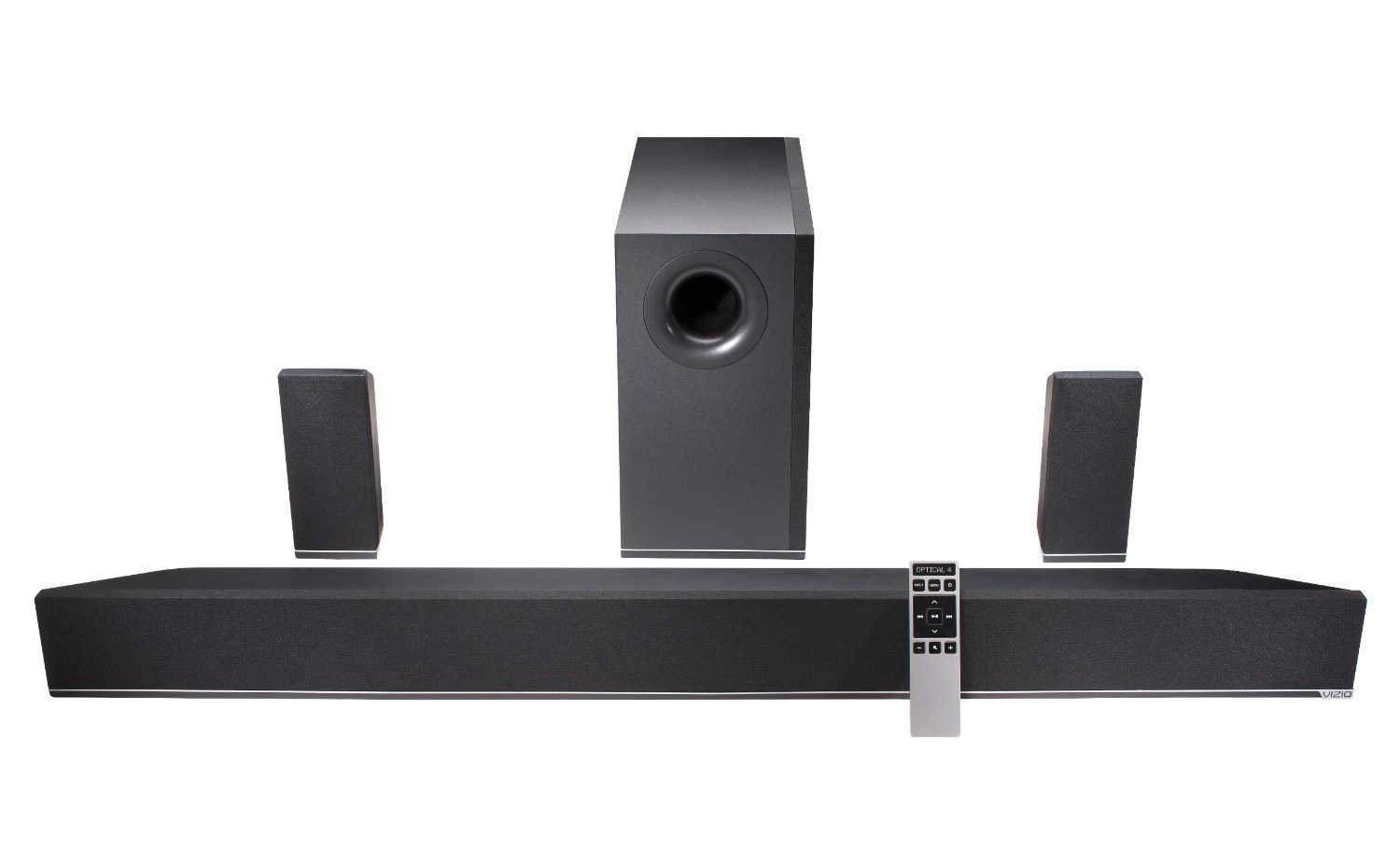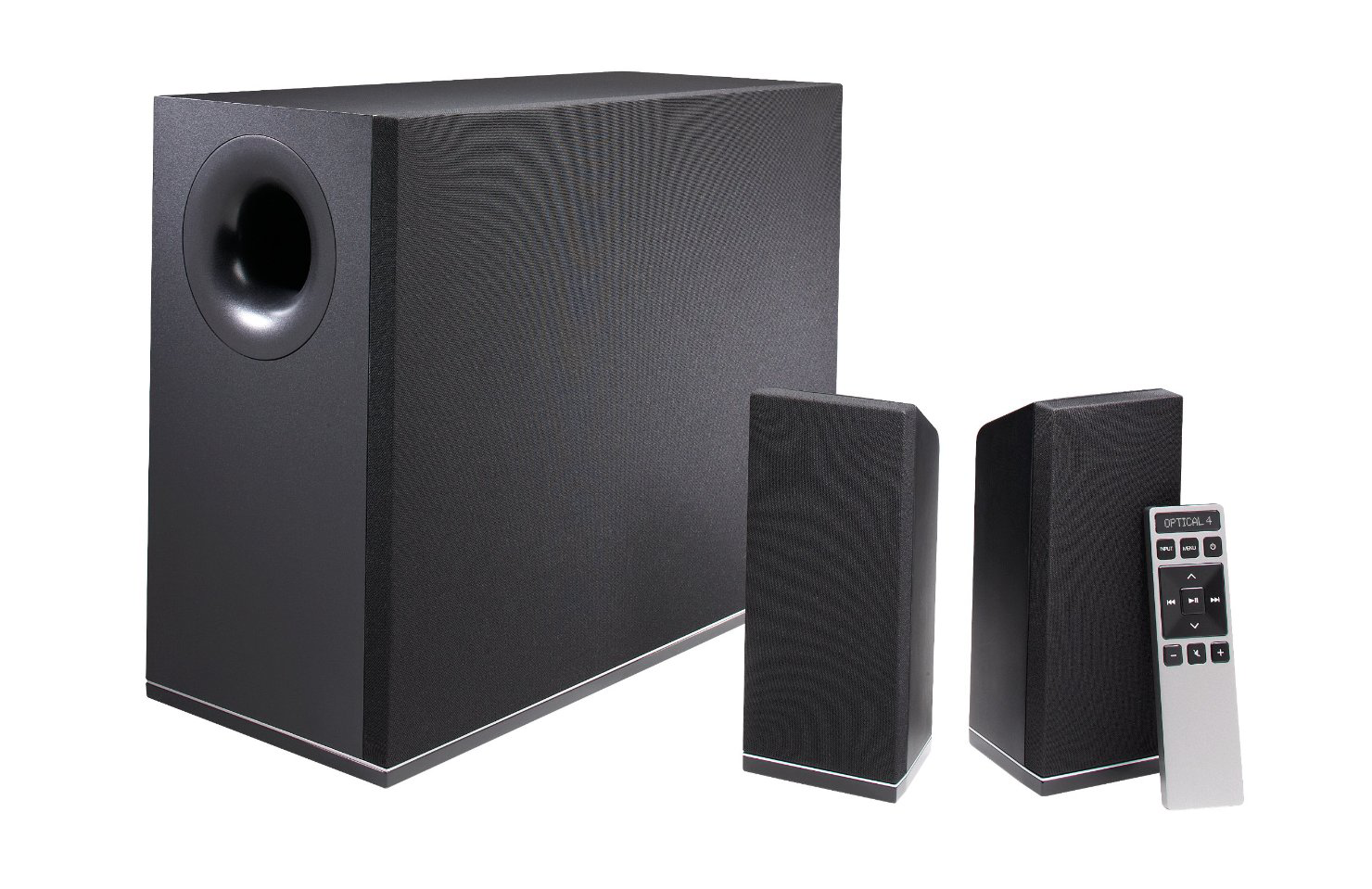Tom's Guide Verdict
Vizio's S4251w-B4 delivers true 5.1 sound in the convenient form of a soundbar for an affordable price.
Pros
- +
5.1 sound with the ease of a soundbar
- +
Bluetooth support
- +
Inexpensive
Cons
- -
Requires wired connection to satellite speakers
- -
Remote screen difficult to read
Why you can trust Tom's Guide
Soundbars simplify your home theater—there's no need for a separate A/V receiver and speakers to improve on your TV's weak audio so you can better enjoy shows and movies. But in most cases you sacrifice the full surround-sound experience in exchange for a streamlined setup. Some soundbars try to emulate the immersive sound effect, but it can't compare to the real thing. Vizio's S4251w-B4 brings true 5.1 surround sound to the soundbar, and at an affordable price. With plenty of features and power, the S4251w-B4 represents an excellent value.
Design
To create 5.1 channels of sound while maintaining the simplicity of a soundbar, Vizio packed the front, center and left channels into the main soundbar that goes above or below the TV. It also included a wireless subwoofer (the .1 in the system) and two satellites, or surround-sound speakers. The satellites connect to the subwoofer for power.

At a little more than 42 inches long, the main soundbar looks best with larger TVs. I tested it with a 55-inch Panasonic P55ST60. But the subwoofer and satellites are nondescript, attracting little attention—a good thing in the eyes of most people. The subwoofer is thinner than most at just under 12.5 x 7 inches. By comparison, JBL's SB400 subwoofer measures 14 x 13 x 12.6 inches.

The S4251w-B4 doesn't include any HDMI inputs; instead, you connect all your video sources directly to the TV, and then use an optical digital, coaxial digital or stereo RCA cable to pass the sound from the TV to the soundbar. With all those connections, the Vizio will likely work with almost any TV, not all soundbars can claim.
MORE: Our Favorite Sound Bar Speakers
The main soundbar has buttons on the left side for power, volume, input source and Bluetooth. But the remote controls most of the functions. The remote features large, easy-to-use buttons. Since the soundbar has no display, Vizio put a small screen on the remote so you can see menu options. Unfortunately, the screen has no backlight, which makes it very hard to read in the dark.
Setup and Use
I connected the main soundbar to the TV via the optical digital cable and after setting the input on the remote to the appropriate mode, received sound quickly.
Get instant access to breaking news, the hottest reviews, great deals and helpful tips.

The wireless subwoofer quickly paired with the main soundbar to provide the low-frequency effects. The subwoofer also powers the surround satellite speakers. However, the included speaker wire to go from the subwoofer to the surrounds is only about 13 feet long. For many people that may be enough, but it prevented me from optimally placing the subwoofer near the TV and the satellites behind my couch. Instead, I opted to place the sub next to the couch so I could have the satellites behind me.
To achieve the best surround-sound experience, you'll want to adjust the levels and balance of the speakers. You do this manually through the remote. Press Menu, then use the arrow keys to scroll through the options. You can set the levels for the center, subwoofer and satellites, as well as the balance between the satellites. While this is more difficult using the remote than an on-screen menu would be, I was able to find a good overall balance for my room and seating arrangement.
MORE: Best Bluetooth Speakers Available Now
The S4251w-B4 also includes Bluetooth, so you can stream music from a mobile device or computer. The easiest way to pair the speaker with your device is to use the remote; under Menu, find BT Pair and press the Play/Pause button. You can then use your device's Bluetooth setting to complete the pairing.
Audio Performance
Overall, the S4251w-B4 provides good sound for the money. The subwoofer and satellites accomplish their goal: they create a more immersive experience than a two-channel soundbar. The subwoofer adds resonance that helped the narrators' voices on Ken Burns' The Roosevelts: An Intimate History better fill the room. The surround effects made the creepy spiders of Murkwood forest in the Blu-ray version of The Hobbit: The Desolation of Smaug more frightening and the cheers from the crowd during a Monday Night Football game more engaging.

The subwoofer puts out quite a bit of boom for its size, but it lacks details. So while the floor rattled when Batman chased the Joker in The Dark Knight, I couldn't hear the rubber-on-the-road detail of the Batmobile that I can in a more precise sub, like the bigger model that comes with the JBL SB400.
When listening to music through the Bluetooth connection, the S4251w-B4 performed well, creating a wide spread of guitar and drums on Led Zeppelin's "What Is and What Should Never Be." Cannonball Adderly's saxophone sounded warm and full on his "Autumn Leaves." However, the S4251w-B4 couldn’t produce the crisp highs or detailed bass that a more expensive—and music-focused—system like the Sonos Playbar could.
Bottom Line
The Vizio's S4251w-B4 is an excellent value, bringing 5.1 surround sound to your viewing experience without much additional equipment. It makes voices easier to hear and enhances the immersive feel of movies. While the sound lacks detail found in more expensive units, you'll be hard pressed to find a soundbar with more features and better performance for this cost.
Specs
Left channel: 2 x 3" mid-range drivers, 1 x 3/4" tweeters
Right channel: 2 x 3" mid-range drivers, 1 x 3/4" tweeters
Main soundbar: 42.32 x 3.74 x 3.15 inches, 8.9 pounds
Surround speakers: 3.18 x 7.42 x 2.77 inches
Subwoofer: 6.93 x 12.52 x 15.86 inches, 14.7 pounds
Inputs: Optical digital audio, coaxial digital audio, stereo RCA, 3.5mm, USB
Connectivity: Bluetooth

Michael Gowan is a freelance technology journalist covering soundbars, TVs, and wireless speakers of all kinds of shapes and sizes for Tom’s Guide. He has written hundreds of product reviews, focusing on sound quality and value to help shoppers make informed buying decisions. Micheal has written about music and consumer technology for more than 25 years. His work has appeared in publications including CNN, Wired, Men’s Journal, PC World and Macworld. When Michael’s not reviewing speakers, he’s probably listening to one anyway.
-
ldun damn, will just be a few inches too wide to fit for my section of wall. Are there other "good for gaming" (came from best sound bar 2014 article) soundbars that are under 36in wide and around the same price point?Reply
